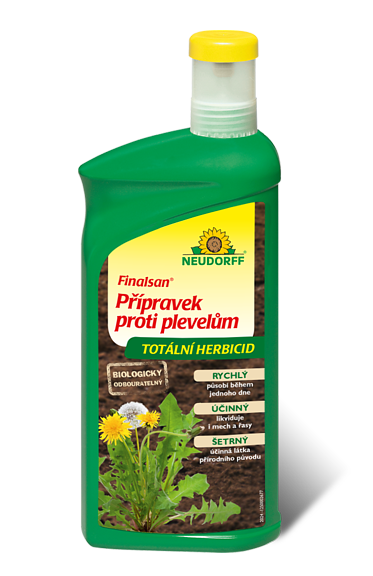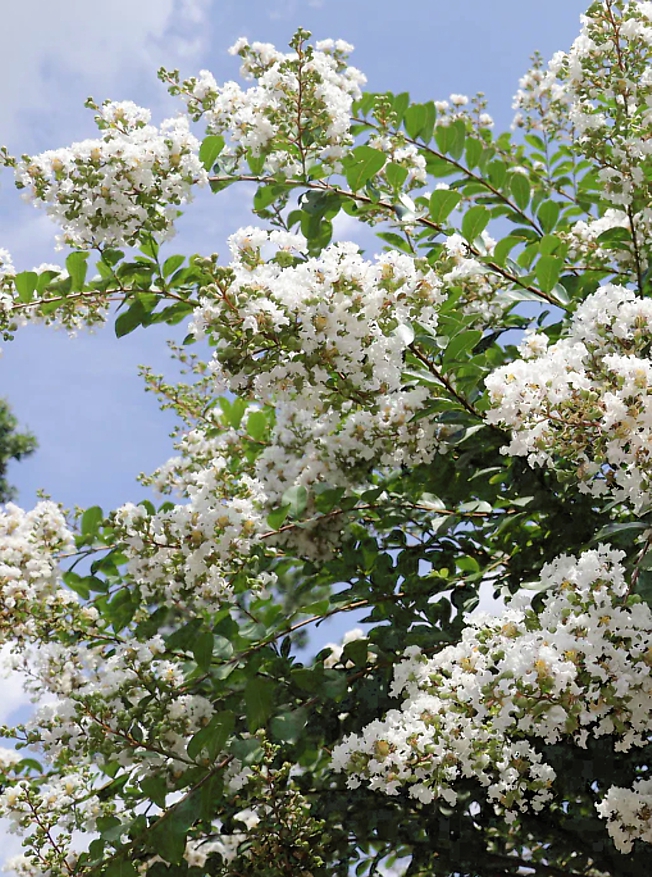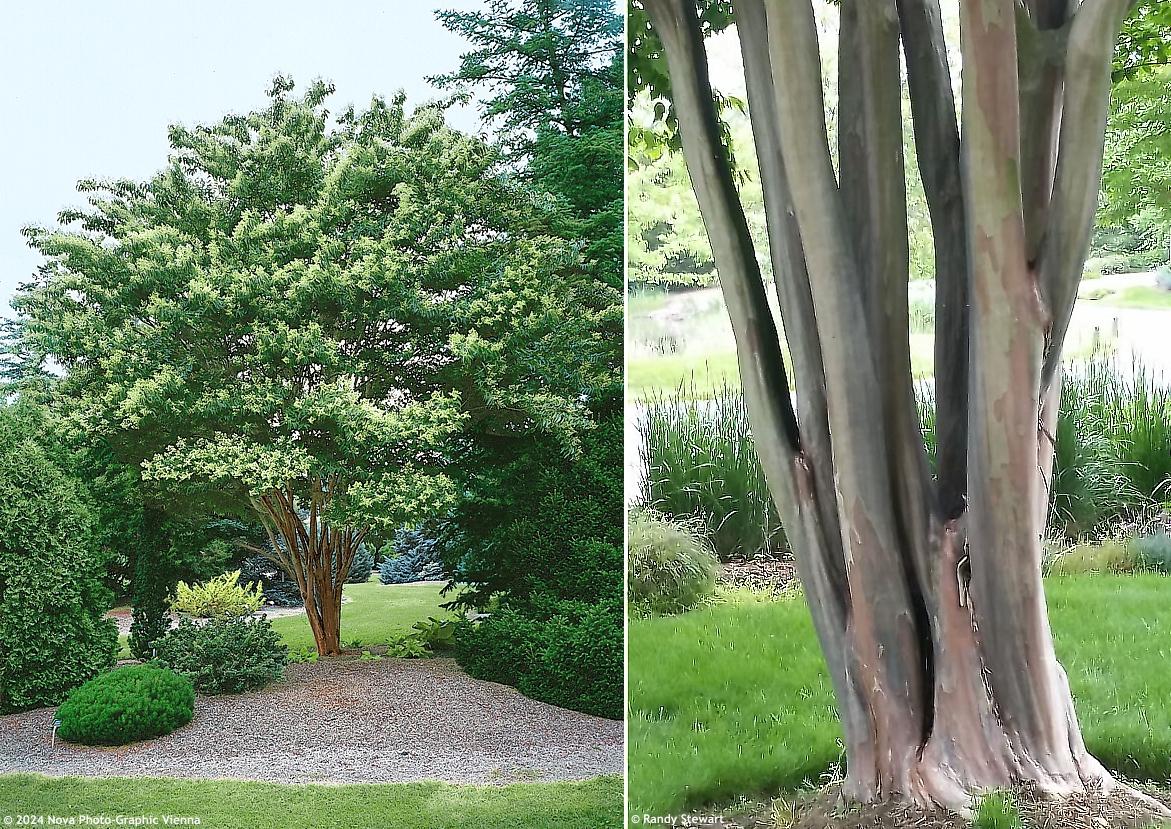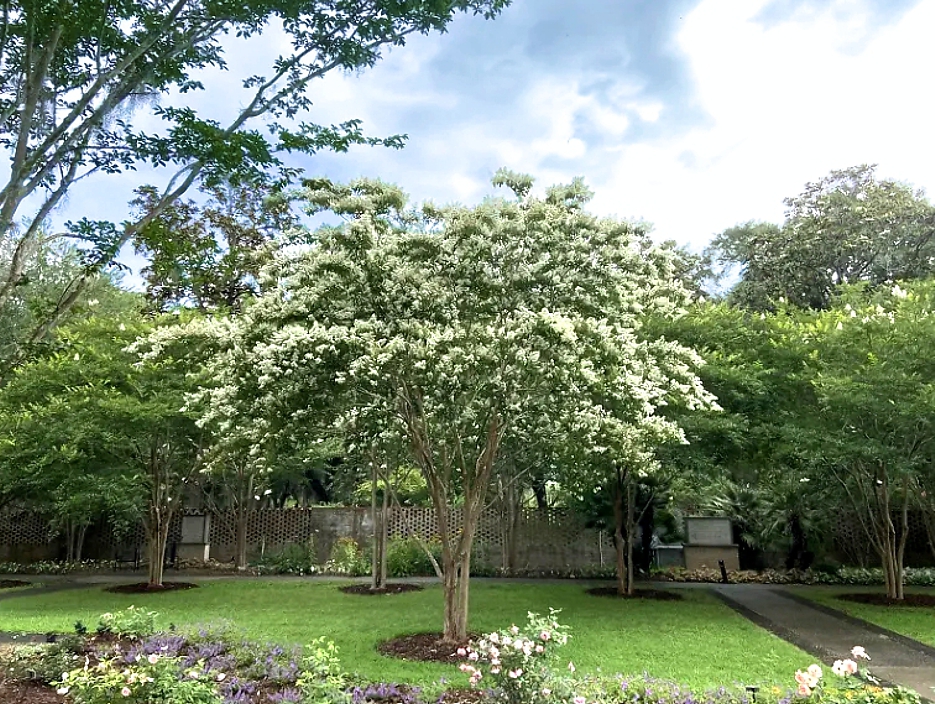Lagerstroemia fauriei 'FANTASY' Japanese crepe myrtle
Lagerstroemia
Crape myrtle is a flowering shrub or small tree from China. It was first introduced to the USA and the UK in the 18th century. The original plant lagerstroemia indica is too tender and not too pretty so breeders were working on further hybridization and the most attractive varieties available now are believed to be results of crossing with l.speciosa and l.fauriei. Far more important news for us is the fact that among those finished plants were selected others that survived lower temperatures than what was common in the areas of natural habitat so we have a few myrtles that can grow even in our climate. Some were selections, other consequent hybrids.
One of the pioneers in breeding hardy crepe myrtles was an American botanist Dr. Donald Egolf from the U.S. National Arboretum in Washington, D.C. Honouring his name, his and subsequent hybrids are sometimes called x egolfii. His unique breeding programme began in 1959 when he used seeds of the l. fauriei species, which three years earlier had been collected by his colleague Dr. John Creech on the Japanese island of Yakushima. Creech noticed the remarkable resistance of the plants there, not only to powdery mildew, but also to the not-so-friendly climate since the bushes and trees grew in very exposed places. Such conditions could not compete with the hot and humid climate of the original species of l. indica.
Fantasy is a fast-growing Japanese crepe myrtle variety. It makes white flowers arranged in short, upright panicles. They are not fragrant and appear, according to the quality of summer, from August to September in C.E. climate. The leaves are deciduous, glossy, tinted mahogany red as they emerge and deep green in summer. In autumn they turn orange and red shades. Fantasy grows fast into an upright, tall shrub or mid-sized tree.
Crepe myrtles naturally form V-shaped shrubs or multi-stemmed trees. You can leave them to their own devices or train them into a spectacular multistems: when your plant reaches a height of around two meters you can start removing lateral branches from the lower parts to shape it into an elegant multi-stemmed tree. Mature trunks produce a beautiful pattern similar to that on planetrees, with several shades of brown, green, and beige. When the trees shed leaves and trunks become bare the display of these coloured trunks of crepe myrtles is usually the best.
Crepe myrtles need little care. They need full sun with zero shade during the day. Grow them in well-drained soil that should be kept moist before the plant is fully established. If cultivated in acidic soil the plant will make fabulous colour play of autumn foliage. Crape myrtle needs heavy mulching in winter and some mulch in summer to retain moisture. Fertilize it in spring to encourage growth (nitrogen-based fertilizers), and in summer to encourage flowering (phosphorus-based fertilizers). Fantasy is above ground (wood) hardy to about -24 °C.
Last update: 27-06-2024










































